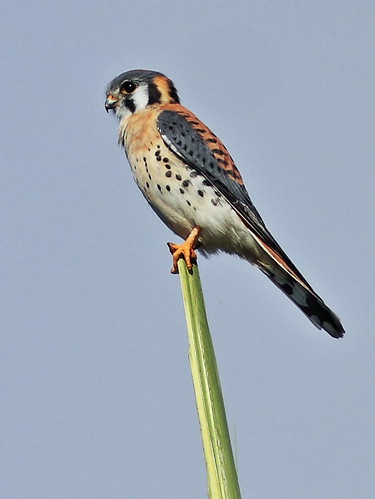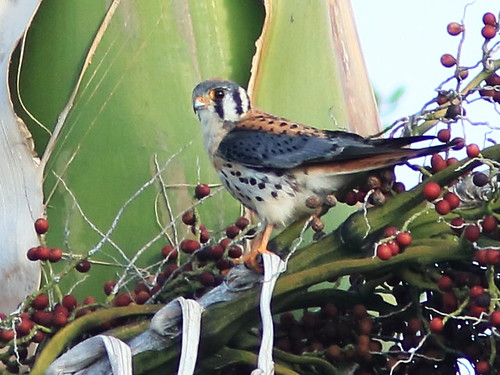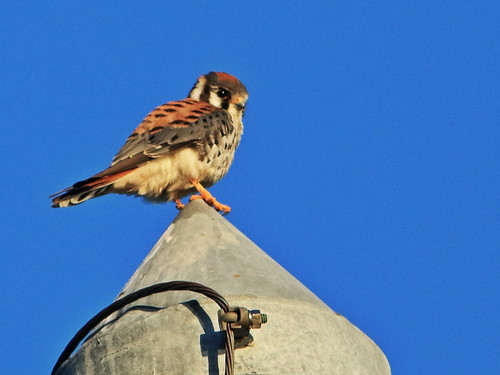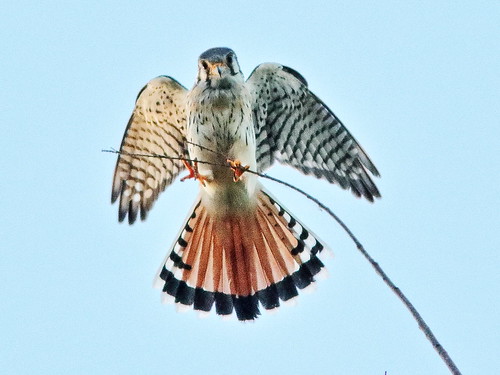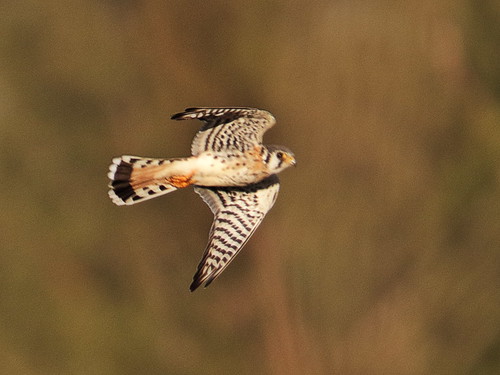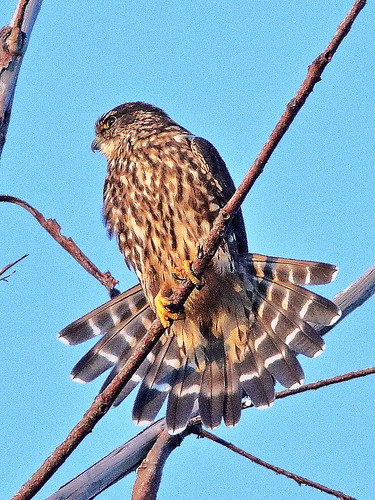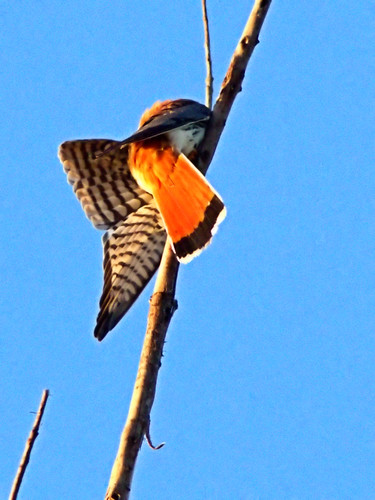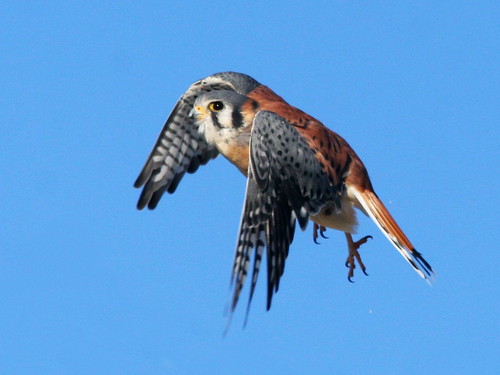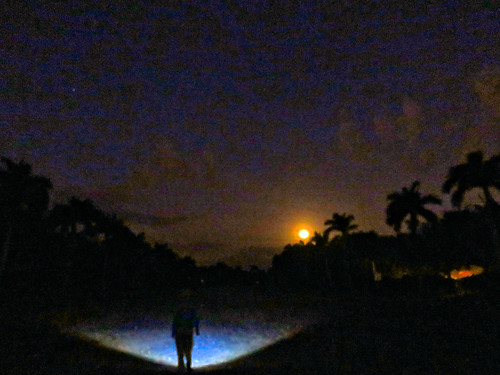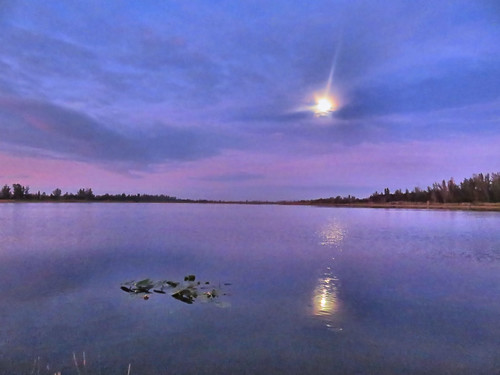One morning I saw the unmistakable form of an American Bittern hiding in the sedges of the wet prairie:

The next day, to my surprise, it was still hiding in nearly the same spot:

Not wishing to disturb it, I casually took its picture and walked on. However, an hour later the bittern was there again! Now look at the second photo more closely. This little clump of reeds will not fool me again!
Another day a small mammal (or maybe an owl?), was out in the open, watching me. It looked exotic, resembling a cross between a fox and a squirrel:

I cautiously crept closer, and this is what I saw, a coconut!:

You are sensitive to changes in the soundscape-- the order in which various birds first call or sing in the morning and the seasonal variations in the mix and character of their sounds, the roar of flies crowded on the carcass of a dead animal or fresh scat, the hum of a swarm of bees:
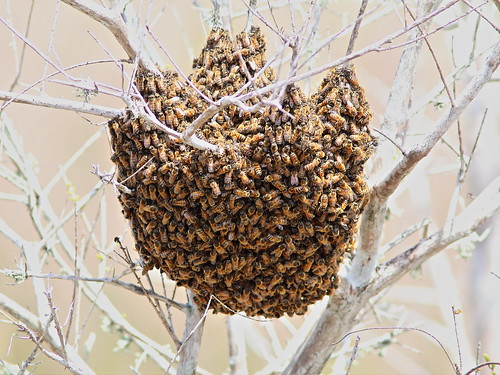
Your nose detects the opening of the flowers-- the sweet honeysuckle scent of Ligustrum, the strong camphor smell of Melaleuca flowers, the turpentine-like odor when you brush against the Brazilian Pepper shrubs, the citrus smell of Lantana flowers which seems to be somewhat more or less pleasant depending upon their color... As a kid I could detect the musky odor when the Garter Snakes emerged from their dens in early spring to gather in squirming copulatory masses, and the lemony sweetness of a colony of yellow Citronella ants in mid-summer (they smelled so good that I even tasted one-- to my surprise it was disgustingly bitter!).
Honeybees and ants on fresh Ligustrum flowers:

Northern Harriers use their acute vision and hearing to pinpoint prey hidden in the grass. They sweep back and forth over a grassy area almost as if they are following a planned GPS grid. They have been said to notice even minor changes in the areas they scan, implying they have excellent spatial memory.
This reminds me of digital subtraction technology which superimposes two images separated by a time interval and subtracts all the identical overlapping background areas to display only objects which are new, moved or have changed. It is useful in aerial photography to allow the tax assessor to easily find alterations in structures which may modify their size or shape, in astronomy to detect new or moving heavenly bodies, for armed forces to discover recently placed weapons or fortifications, and in medicine, when using the same technique, serial digital X-rays or scans may track changes in blood vessels, the progression of tumors or healing of fractures.
Northern Harrier:
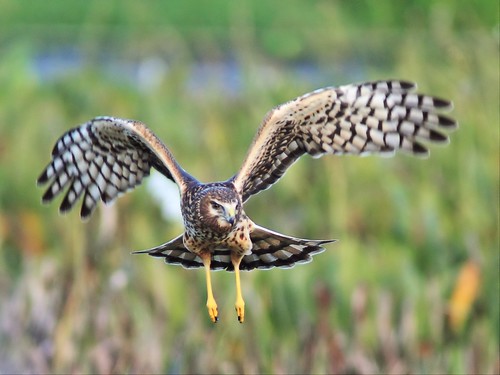
Is the harrier's small brain capable of such a feat? In a certain sense, walking a patch resembles this phenomenon. Humans have the power to ignore the familiar-- the cracks in the sidewalk, cooking and tobacco odors at home, even the voice of a spouse! While I plead no contest to the latter, one winter morning I was guilty of not hearing the distinct calls of an American Robin in our local south Florida wetlands. Since it is a bird which I heard so often back in Illinois, my brain was slow to alert me to the fact that the bird was misplaced, as robins are infrequent and unpredictable visitors. Luckily I became aware and I even obtained photos.
American Robin:

Some of the changes in the landscape are unwelcome. These are often noted on Monday morning, after weekend trespassers on "wreckreational " vehicles (ATVs, ORVs, mud bikes, swamp buggies and jeeps) have violated the pristine areas of the preserve:
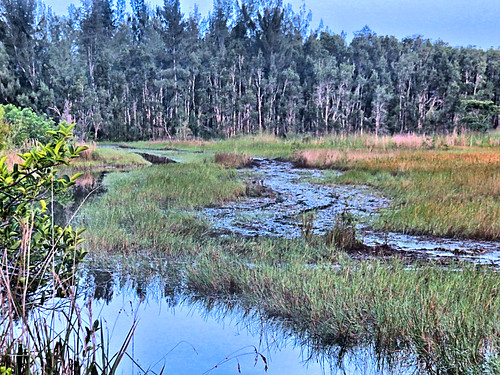
This is all that was left of my dark and shady sit-spot under the canopy of the "Fake Hammock" after trees were cut and bonfires roared, thanks to the ATV crowd. Since this photo was taken back in 2013, tall Phragmites grass has completely invaded the sun-drenched spot:


Sometimes ugly spots can be beautified, as when Painted Buntings bathe in fresh Mud Buggy tracks:

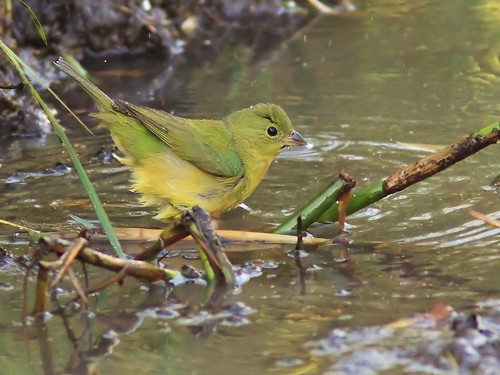
A Killdeer forages at a muddy rut:

The antics of the partying off-road drivers can actually be welcomed when they practice doing "donuts" in the marsh. They create artificial "alligator holes" which retain water and attract wildlife, such as this Northern Waterthrush which is following a venomous Water Moccasin along the "shore" of just such a depression (Ophidiophobia warning):
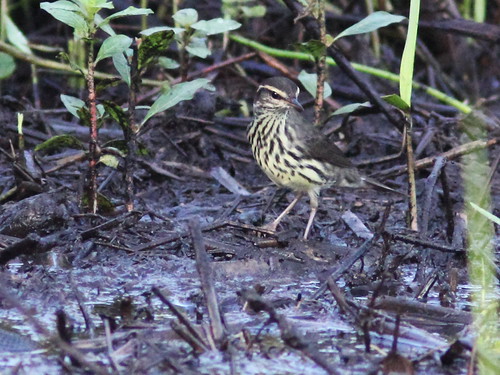

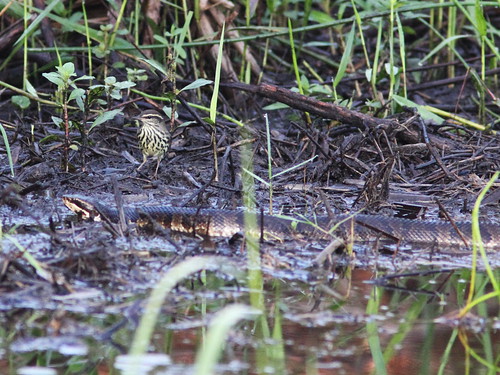
Hurricane Irma struck in October, 2017. It decimated flowering plants and killed almost an entire generation of local butterflies, adults, larvae and eggs. Before the storm they flocked to the Lantana patch. At times one could not distinguish between flowers and butterflies:
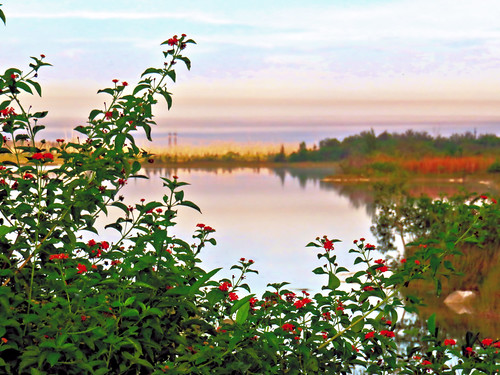
The Lantanas recovered slowly and some bloomed about six months later, but few butterflies visited. This past summer I could go a week without seeing more than one or two Gulf Fritillaries...
:
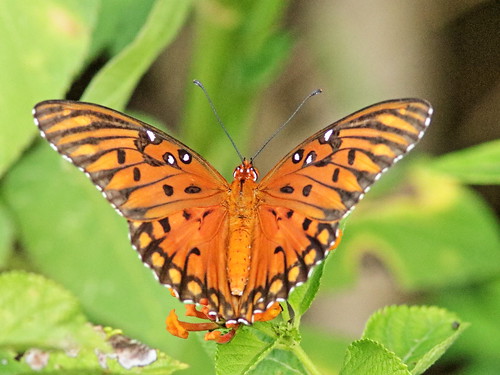
... or Julia heliconians. This was the first female Julia I saw in over a month (September 4, 2019):
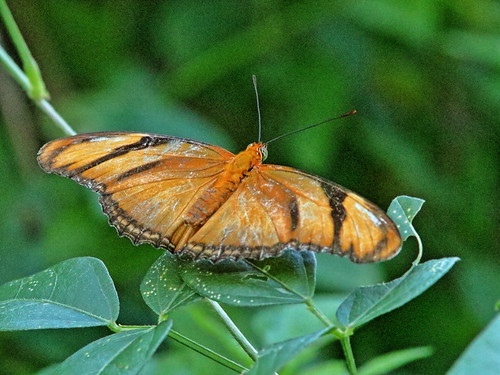
Julias are now becoming more common this is a male visiting the Lantanas on September 21, 2019: :
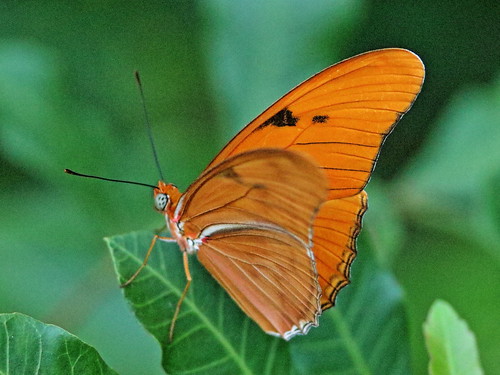
As if the fury of Hurricane Irma's wind were not enough, vandals set fire to wind-felled trees (February, 2018):

Paradoxically, the fire created a new but temporary habitat. The opening in the wetlands attracted prey for a Louisiana Waterthrush which remained there last autumn for an unprecedented three month stay as it probed among charred tree trunks and branches (October, 2018):


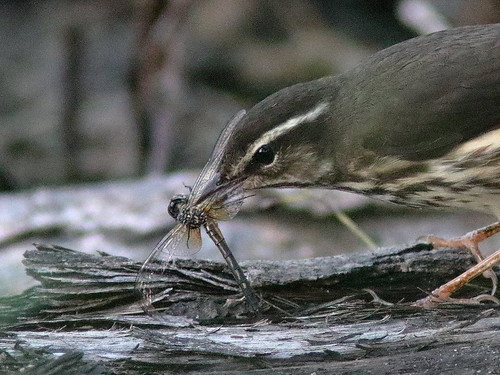
The fire improved sight distance, making it easier to see and photograph wildlife, such as this Gray Squirrel...

...and a Pileated Woodpecker which was attracted to the dead and dying trees:
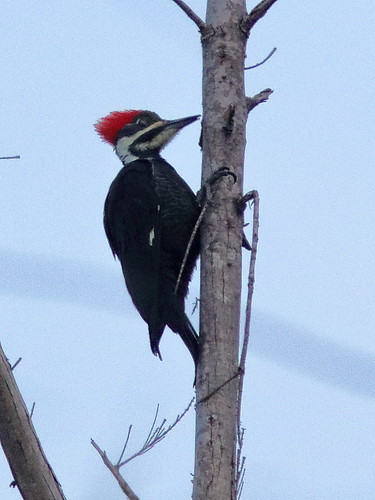
This White-tailed Deer buck failed to notice me as he entered the edge of the burned area:

The burned area is quickly recovering as invasive Melaleuca and Australian Pines sprout and flourish. Some have thrust up more than 15 feet during the two years since the fire. This photo shows the area about one year later (August 28, 2018):
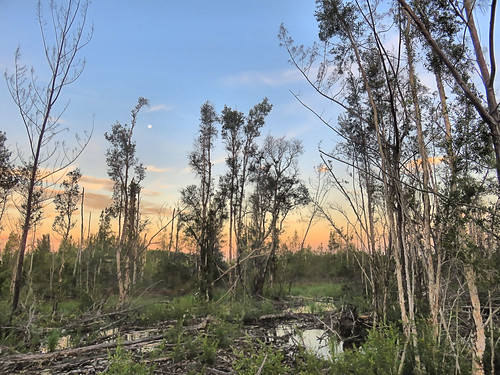
Here is the scene on October 24, 2019. Open water is already obscured by dense vegetation:

= = = = = = = = = = = = = = =
Linking to Misty's CAMERA CRITTERS,
Linking to Eileen's SATURDAY'S CRITTERS,
Linking to SKYWATCH FRIDAY by Yogi, Sylvia and Sandy
Linking to WEEKEND REFLECTIONS by James
Linking to BirdD'Pot by Anni
Linking to Our World Tuesday by Lady Fi
Linking to Wild Bird Wednesday by Stewart
Linking to Wordless Wednesday (on Tuesday) by NC Sue
Linking to ALL SEASONS by Jesh
___________________________________________
Please visit the links to all these memes to see some excellent photos on display
________________________________________________


